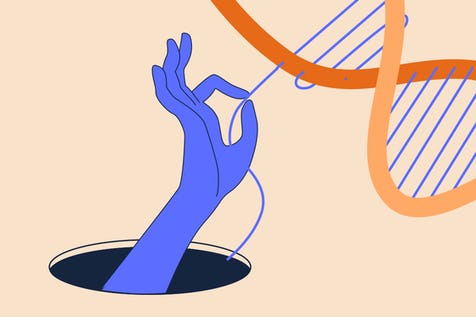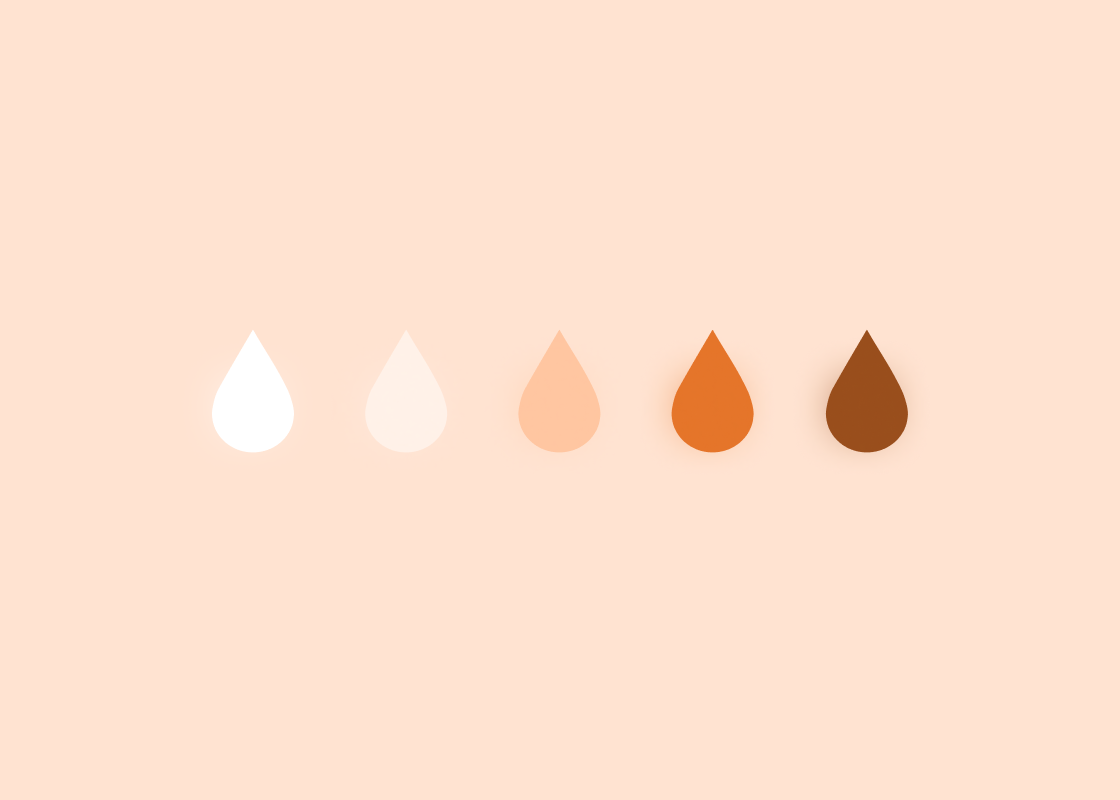For the most part, when we hear people talk about reproductive health and pregnancy, it’s often focused on relationships between a woman and a man. However, the experience of menstruation and fertility isn’t tied to sexuality or even gender identity. Rather, it is a unique experience that should be treated on an individual basis, because understanding menstrual health and fertility is something every person can benefit from. As Pride month comes to a close, let’s continue the celebration of raising awareness by shining a light on how LGBTQ+ people like myself are a fundamental part of the conversation.
LGBTQ+ Awareness
Raising awareness of the stigma LGBTQ+ people can face regarding fertility and reproductive health is essential in changing outdated attitudes. It’s true that for many LGBTQ+ partners, the options for conceiving a child are very different from those of straight couples. But it should never be thought that, because one is not part of a cis-gendered heterosexual couple, they don’t want or can’t have children. Personally, as a pansexual, cis woman, my relationship with fertility shifts from partner to partner. When I’m considering sex with someone with a penis, discussions around contraceptive choices and the necessity of using protection are at the forefront of my mind. Whereas, when I’m with a woman or a person with a vulva, the focus is on STIs and how we can afford fertility treatment such as sperm donors and artificial insemination.
But what doesn’t change is the importance of prioritising reproductive health and understanding the fluctuating cycle of menstruation.
Being an LGBTQ+ woman or menstruating person means we still want and need to know how our reproductive hormones impact our mood, our energy levels, and our general wellbeing. In many ways, it will put extra pressure on fertility awareness and conception methods because the route to pregnancy may be longer, involving artificial fertility treatments and potentially a big old price tag. Tracking each menstrual cycle is a brilliant way to flag any problems that may impact the future of having a family. It will also allow you to have more knowledge of your general day-to-day health by understanding the natural fluctuations of mood, appetite, and your body's appearance (including skin health, bloating, and breast/chest swelling).
Equal Access
Twenty years ago, the idea of same-sex couples having a child wasn’t even a possibility. Although this is changing, sadly, the disparity between conception options for straight and LGBTQ+ couples is still extensive. Not only are there financial costs that many fertile heterosexual parents may never face, but there are also fewer legal and emotional challenges. Given that gay and lesbian marriage is still illegal or not recognised in over three-quarters of the world, same-sex couples face many barriers regarding their options of parenthood [1]. This can result in emotional and mental upheaval, which can be exacerbated by fertility clinics failing to include LGBTQ-related content on their websites and within their business models. Take a second to think about how many same-sex couples you see in adverts or included in messaging and you’ll start to notice the lack of representation.
Currently, 21 countries across Europe let one member of a same-sex couple adopt a partner's child, 17 permit joint adoption, and 14 allow lesbian couples access to fertility treatments involving donated sperm, including IVF (in vitro fertilization) [2]. It can often take people years of research into LGBTQ+ rights and medical costs to find a way to fulfil their dreams of having a child. Even for single women and people with uteruses it can be a challenge to access donated sperm. So staying informed about your individual health by tracking your cycle is something that can ease any additional strain. It can also help you recognise patterns in your mental health, mindset, and temperament. I, for one, notice dramatic shifts in my mood when transitioning from the follicular phase to the luteal phase of my cycles.
Happy Realities of LGBTQ+ Parenting
As a same-sex couple, when trying for a baby, the choice of whose egg, sperm, and uterus to use is an exciting, but sometimes complicated consideration. For some women and people with uteruses, they may want their egg to be used but not their womb. Whereas others may feel more inclined to be the carrier and not the donor [3]. Opening space for this to be a supported discussion is important because there can be emotional and mental impacts for all involved.
Transparently seeing more LGBTQ+ families within media and entertainment is great for normalising the process of same-sex parenting. Shows such as the Danish drama series ‘Skruk’ (‘Baby Fever’ in English) as well as advocates and public figures talking about their LGBTQ+ journeys of conception are great examples of how this visibility can be created. These discussions can even offer hope as well as compassion for those who have experienced miscarriages or failed IVF/IUI treatment.
Such visibility also builds a far more supportive environment for children growing up with same-sex parents. The fact that, in some countries, the non-birth parent is now legally recognised as the mother without having to apply for adoption, is a brilliant legal development. Decisions like these make a huge impact on the support and acceptance that LGBTQ+ people feel in their journey of parenthood.
To add to this positive shift in society are new studies showing that female same-sex couples have the highest successful birth rate per embryo transferred amongst patients [4]. It’s thought that this is partly thanks to women and menstruating people accessing fertility treatment at a younger age, or before infertility complications arise. This emphasises the importance of staying informed and knowledgeable about menstrual health by tracking symptoms and cycles. In this way, any issues can be detected at an earlier stage allowing more time for solutions to be found.
The Cost of Conceiving
When thinking about fertility costs, most aspiring same-sex couples can be expected to pay out tens of thousands of Euros to attempt a pregnancy. This can mean having to start saving years before deciding to try for a child or having a partner to build a family with. Because the majority of countries ban LGBTQ+ couples from having fertility treatment at home, many have to finance travelling abroad to find a solution via expensive procedures such as artificial insemination, IUI (intrauterine insemination), or IVF.
In addition to this is the inequality regarding state funding in countries where it is legal. For example, heterosexual couples in the UK are offered three free cycles of IVF if they haven’t conceived after two years of unprotected sex. Whereas lesbian couples would have to pay for six cycles of intrauterine insemination (IUI) at private clinics - which is cheaper but generally less effective than IVF - before being offered six free cycles of IUI, and then finally IVF.
To give this some financial context, one cycle of IUI costs between 700 and 1,600 Pounds (800 - 1,900 Euros) while donor sperm costs at least 850 Pounds. This can really add up if, considering you may not conceive on the first attempt, several vials of the donor's sperm will have to be purchased. Therefore, it can really help to continuously track your cycle and recognise any bumps in the road ahead of taking those first steps towards conceiving. There are some wonderful articles on inne’s blog all about fertility and hormonal awareness that you can read, including The 6 Signs of Ovulation or All You Need to Know about the Luteal Phase.
Trans-inclusive Conversations
It’s been brilliant to see campaigns and messaging promote the fact that not all people who menstruate are women. However, even the term “femtech” can sadly result in people who sit between the binary of gender or are transmasculine feeling excluded from the conversation. Therefore, it’s essential to remember how, for some, menstruation and health issues related to genitalia can cause a sense of dysphoria or shame [5]. Finding alternative ways to make the experience of menstruating manageable without fearing being “outed” is something we can all play a part in doing. This starts with monitoring your speech and not presuming or judging others for their choices not to have GRS (gender reassignment surgery).
It’s uplifting, therefore, that apps such as inne are a private and personal tool to track menstruation discreetly. There is so much we can learn and understand about ourselves, our mood swings, and our bodies by staying in tune with menstrual health. So knowing when your period is due, ahead of time, provides an element of control by staying informed about your cycle. Having that power in your pocket, on your phone, can help ease any additional stress or panic by being prepared for when your period may start.
Language of Change
As always, with any changes in society comes the need for inclusive language and shifts in terminology. For example, those who are assigned females at birth but identify differently may still need access and support regarding abortions, contraception, endometriosis, or PCOS. This may relate to hormone therapy, gender-affirming hysterectomies, fertility treatments, as well as violence and mental health issues [6].
We can all play a part in creating a happier, more LGBTQ-inclusive future by asking people their pronouns and moving away from presumptions about gender, marital status, menstruation, and sexual history. Through these simple individual approaches, we can collectively help build a sense of solidarity for, and with the LGBTQ+ community. Supporting one another on their own individual journeys of reproductive health and fertility is something inne is proud to be a part of.
References
1. https://www.bbc.co.uk/news/world-43822234 - Homosexuality: The countries where it is illegal to be gay, published 12 May 2021
2. https://news.trust.org/item/20210426084346-49y09 - Long road to motherhood: Lesbians fight for IVF in Europe, published Monday, 26 April 2021
3. Same-Sex Couples Face Fertility Issues When Trying to Conceive, Stephanie Watson, published December 16, 2020 https://www.webmd.com/infertility-and-reproduction/features/same-sex-couples-pregnancy
4. New figures show how different people are using IVF, Human Fertilisation and Embryology Authority, published September 2020 https://www.hfea.gov.uk/about-us/news-and-press-releases/2020-news-and-press-releases/new-figures-show-how-different-people-are-using-ivf/#:~:text=The%20report%20also%20highlighted%20that,lowest%20birth%20rates%20at%2017%25
5. National Center for Transgender Equality. The Report of 2015 of Transgender Survey [Internet]. 2015. Available from : https://transequality.org/sites/default/files/docs/usts/USTS-Full-Report-Dec17.pdf
6. Wilson C, Cariola LA. LGBTQI> Youth and Mental Health: A Systematic Review of Qualitative Research. Adolescent Res Rev. 2020;5:187–211. [Google Scholar].





